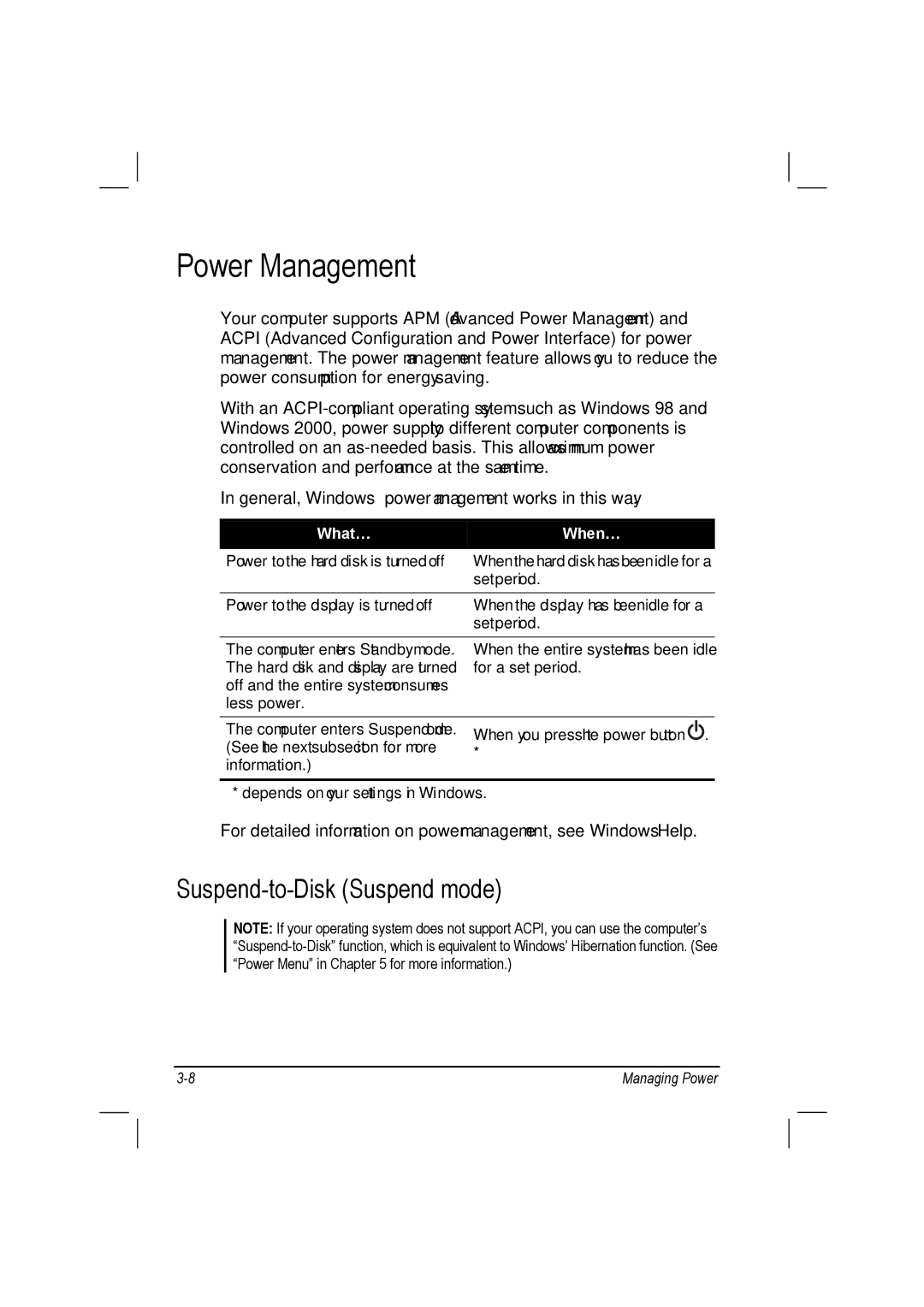
Power Management
Your computer supports APM (Advanced Power Management) and ACPI (Advanced Configuration and Power Interface) for power management. The power management feature allows you to reduce the power consumption for energy saving.
With an
In general, Windows’ power management works in this way:
What… | When… |
Power to the hard disk is turned off | When the hard disk has been idle for a |
| set period. |
|
|
Power to the display is turned off | When the display has been idle for a |
| set period. |
The computer enters Standby mode. The hard disk and display are turned off and the entire system consumes less power.
When the entire system has been idle for a set period.
The computer enters Suspend mode. |
|
| |
When you press the power button . | |||
(See the next subsection for more | |||
* |
| ||
information.) |
| ||
|
| ||
* depends on your settings in Windows.
For detailed information on power management, see Windows’ Help.
Suspend-to-Disk (Suspend mode)
NOTE: If your operating system does not support ACPI, you can use the computer’s
Managing Power |
